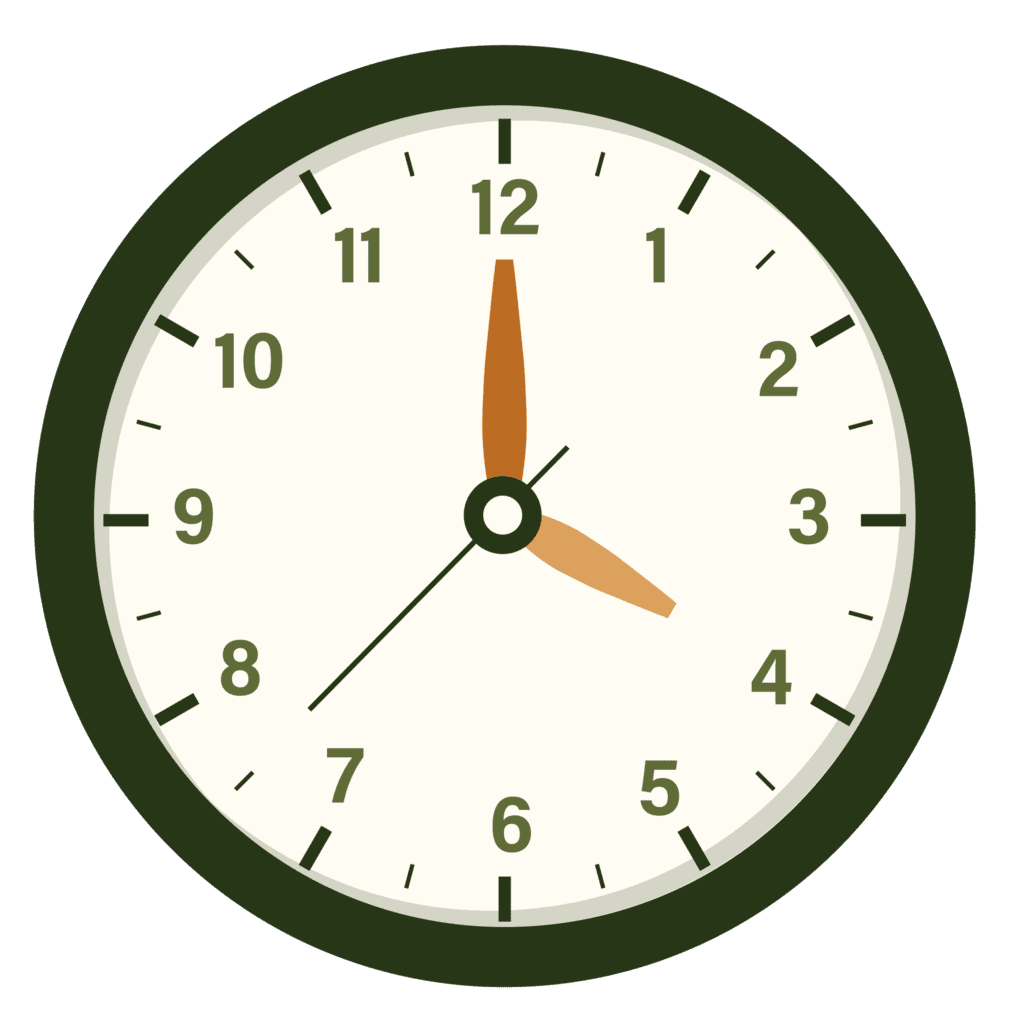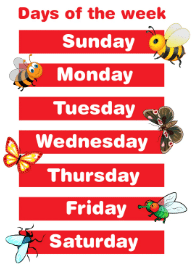Everyday Mathematics: Time and Temperature | Math Olympiad for Class 2 PDF Download
Q1. If you wake up at 7 o’clock in the morning, what time will it be written as?
(a) 7:00 A.M.
(b) 7:00 P.M.
(c) 12:00 A.M.
(d) 12:00 P.M.
Ans: (a) 7:00 A.M.
Morning time is from midnight to noon, and we use A.M. for it.
So, 7 o’clock in the morning is written as 7:00 A.M.
Q2. What does the short hand on a clock tell us?
(a) Minutes
(b) Hours
(c) Days
(d) Months
Ans: (b) Hours
The short hand on an analogue clock is the hour hand, which points to the hour number, like 1, 2, or 3.
Q3. If the hour hand points to 4 and the minute hand points to 12, what time is it?
(a) 2:00
(b) 3:00
(c) 4:00
(d) 5:00
Ans: (c) 4:00
When the hour hand points to 4 and the minute hand points to 12, it means 4 o’clock, written as 4:00.
Q4. An ice cream needs to be kept at 0°C. If the freezer is at 5°C, how many degrees must it be cooled?
(a) 5°C
(b) 3°C
(c) 2°C
(d) 4°C
Ans: (a) 5°C
Current temperature = 5°C.
Target = 0°C.
Difference = 5 - 0 = 5°C.
Q5. How many days are there in a week?
(a) 5
(b) 6
(c) 7
(d) 8
Ans: (c) 7
A week has 7 days.
Q6. If today is Wednesday, what day will it be tomorrow?
(a) Monday
(b) Tuesday
(c) Thursday
(d) Friday
Ans: (c) Thursday
Tomorrow is the next day after today.
If today is Wednesday, the next day is Thursday.
Q7. The weather report says it’s 86°F today. What is this temperature in Celsius?
(a) 30°C
(b) 32°C
(c) 28°C
(d) 25°C
Ans: (a) 30°C
Conversion from Celsius to Fahrenheit.
Subtract 32, then multiply by 5/9. 86 - 32 = 54. 54 × 5/9 = 30°C.
Q8. How many months are there in a year?
(a) 10
(b) 11
(c) 12
(d) 13
Ans: (c) 12
A year has 12 months, starting from January and ending with December.
Q9. If school starts at 8 o’clock in the morning, how many hours are there until 12 noon?
(a) 2 hours
(b) 3 hours
(c) 4 hours
(d) 5 hours
Ans: (c) 4 hours
From 8 o’clock to 12 noon is
8 to 9 (1 hour),
9 to 10 (2 hours),
10 to 11 (3 hours) and
11 to 12 (4 hours).
So, it’s 4 hours.
Q10. The temperature outside is 25° C. If it drops by 7° C at night, what is the new temperature?
(a) 32°C
(b) 18°C
(c) 20°C
(d) 17°C
Ans: (b) 18° C
Starting temperature = 25°C. Drop = 7°C. New temperature = 25 - 7 = 18°C.
|
32 videos|79 docs|77 tests
|
FAQs on Everyday Mathematics: Time and Temperature - Math Olympiad for Class 2
| 1. What is the importance of learning about time and temperature in Class 2? |  |
| 2. How do you read a clock in Class 2? |  |
| 3. What are the different units used to measure temperature? |  |
| 4. How can temperature affect our daily activities? |  |
| 5. What activities can help students understand time and temperature better? |  |


















